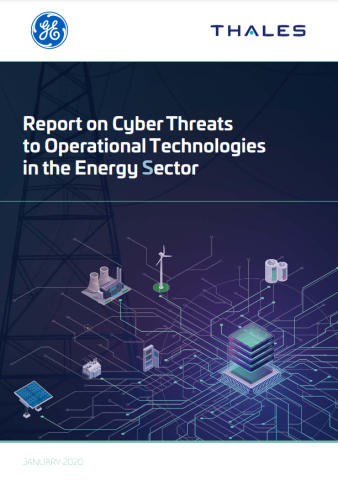Cybersecurity Threats in the Supply Chain: Case Studies, Blockchain, and Defence Strategies
Introduction: When Every Link Counts... and Can Crack
Today, the supply chain is like a buzzing city that never sleeps: suppliers, subcontractors, transporters—all working together to keep things running smoothly. But here’s the hitch: every weak link could become a cybersecurity nightmare. What happens when cybercriminals decide to gate-crash? With cases like SolarWinds, Stuxnet, and embedded servers in Intel processors, let’s explore how blockchain can throw a spanner in the works for would-be attackers.
Case Study 1: SolarWinds - One Simple Breach, Devastation on a Large Scale
Back in 2020, SolarWinds faced a considerable shake-up. Hackers infected an update of their Orion software, which countless companies and government agencies use. The result? Unfettered access to critical systems and sheer chaos. One weak link in the chain snapped, and everything else crashed.
The Threat:
- If even trusted updates can be breached, who can you rely on?
- When applications shared by multiple organisations are compromised, it’s a domino effect waiting to happen.
How Blockchain Could’ve Helped:
- Real-time Update Verification: With blockchain, every version and update of the software would be recorded, allowing independent checks to ensure everything’s above board. Any dubious change? It would be clear for all to see.
- Complete Traceability: Blockchain creates an unchangeable record of alterations. Every change to the code would be visible and transparent to participants.
- Enhanced Authentication: Say goodbye to dodgy access. Only certified, verified entities could make changes. Hackers would have had a much harder time slipping through the cracks.
Additional Defences:
- Continuous Supplier Evaluation: Ensure that partners adhere to strict security standards.
- Test Updates Before Applying Them: Catch potential anomalies before they wreak havoc.
Case Study 2: Stuxnet - A Cyber Weapon on an Industrial Scale
Flashback to 2010, when the Stuxnet worm wreaked havoc on Iranian nuclear facilities. It snuck in through infected USB sticks to infiltrate Siemens systems and sabotage critical infrastructure. Yes, even isolated systems can be compromised.
The Threat:
- Industrial components can be attacked even without network connectivity.
- External devices become ticking time bombs, exploiting unknown vulnerabilities to take down essential processes.
How Blockchain Could Make a Difference:
- Verifying Component Authenticity: Blockchain would allow you to trace each device’s origin and integrity before it’s used. Any suspicious modification would stand out.
- Unchangeable Permissions with Smart Contracts: Only authorised people or devices would have access to critical systems.
- Continuous, Distributed Surveillance: Blockchain keeps tabs on every action taken in the system, making any tampering attempts highly visible.
And Also…
- Isolating Sensitive Networks: Separate systems to prevent attack spread.
- Strict Device Management: Limit the use of USBs and other removable devices.
Case Study 3: Embedded Servers in Intel Processors - When Hardware Becomes a Back Door
Intel Xeon processors, come with a Linux server, the Intel Management Engine (IME). It’s handy for managing systems remotely, but… it’s also a potential access point that could be exploited to take control of critical components.
The Threat:
- Embedded servers in processors can be a subtle point of entry for attackers.
- If compromised, hackers can bypass standard security protections and wreak havoc.
How Blockchain Could Help:
- Component Integrity Monitoring: Blockchain would allow you to track each processor’s history and spot any unauthorised changes.
- Immutable Security Certifications: Blockchain could record and authenticate security certifications for each component.
- Ongoing Component Monitoring: Blockchain records allow you to monitor each component’s use over its lifecycle.
In Addition…
- Disable Unneeded Functions: Reduce the attack surface by disabling the IME if possible.
- Security Patches: Keep each processor up-to-date with the latest security patches.
Conclusion: Blockchain as a Safeguard for the Supply Chain
Reviewing the cases of SolarWinds, Stuxnet, and Intel’s embedded servers, it’s clear that every link in the supply chain can be a vulnerability—or a shield. With the transparency, traceability, and immutability that blockchain brings, it becomes that much harder for cybercriminals to slip through undetected. That said, blockchain is only part of the solution; it needs to be embedded in a comprehensive strategy that includes other tools like network segmentation, stronger authentication, and team training.
In short, blockchain is a valuable ally for securing supply chains and making attackers’ lives that much harder.
References
SolarWinds Supply Chain Attack
- FireEye: Highly Evasive Attacker Leverages SolarWinds Supply Chain to Compromise Multiple Global Victims with SUNBURST Backdoor. FireEye Blog, 2020. Available at: FireEye
- CISA (Cybersecurity and Infrastructure Security Agency): Alert (AA20-352A) – Advanced Persistent Threat Compromise of Government Agencies, Critical Infrastructure, and Private Sector Organizations. Available at: CISA
· Stuxnet Worm
- Symantec: W32.Stuxnet Dossier. Symantec Security Response, 2011. A comprehensive technical breakdown of the Stuxnet malware. Available at: Symantec Report
- Zetter, K.: Countdown to Zero Day: Stuxnet and the Launch of the World’s First Digital Weapon. Crown Publishing, 2014. This book provides an in-depth account of the Stuxnet worm and its implications for industrial cybersecurity.
· Intel Management Engine and Hardware Security
- Intel: Intel Management Engine Critical Firmware Updates. Intel provides technical documentation on security vulnerabilities and firmware updates related to the Intel Management Engine. Available at: Intel Product Security Center
- Black Hat Conference Presentation: Sklyarov, D. Intel Management Engine: Security Overview, Black Hat USA, 2018. A technical presentation on the security architecture of Intel’s Management Engine. Available at: Black Hat
· Blockchain for Supply Chain and Cybersecurity
- World Economic Forum: Redesigning Trust: Blockchain Deployment Toolkit. Provides insights on how blockchain can improve supply chain transparency and security. Available at: WEF Blockchain Toolkit
- IBM Blockchain: Transforming Supply Chain Traceability with Blockchain. IBM explores blockchain’s role in supply chain visibility and security. Available at: IBM Blockchain
· Supply Chain Cybersecurity and Risk Management
- NIST (National Institute of Standards and Technology): Cybersecurity Framework for Improving Critical Infrastructure Cybersecurity. NIST, a trusted resource for cybersecurity frameworks, includes guidelines for securing supply chains. Available at: NIST Cybersecurity Framework
- Deloitte: Managing Cyber Risk in a Connected World: Key Findings from Deloitte’s 2020 Global Cyber Executive Briefing. Provides insights into managing cybersecurity risks in supply chains. Available at: Deloitte Cybersecurity Insights
Author
Patrick Aoun



